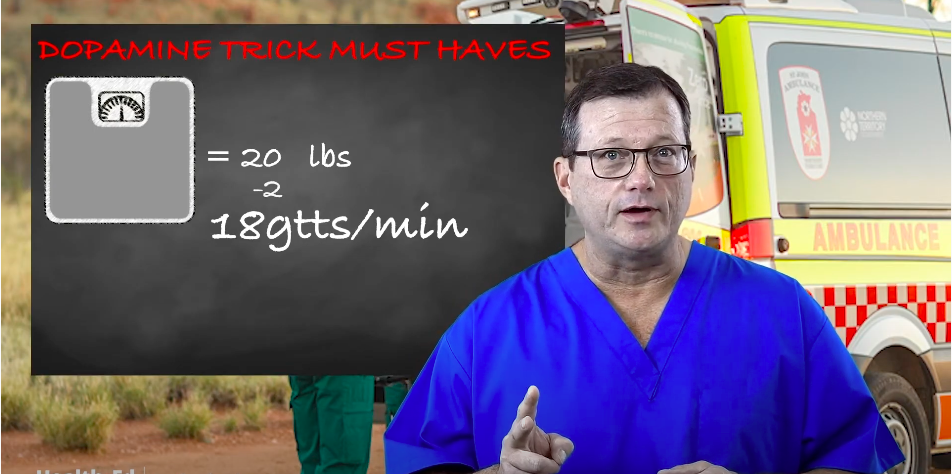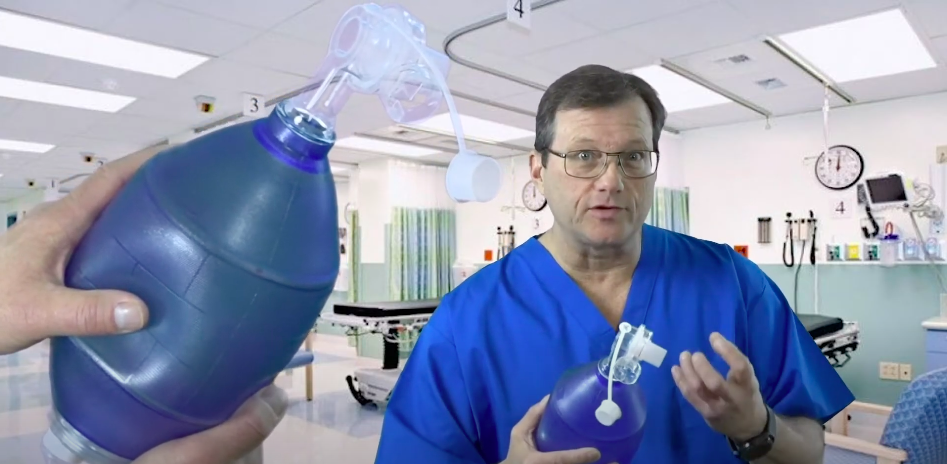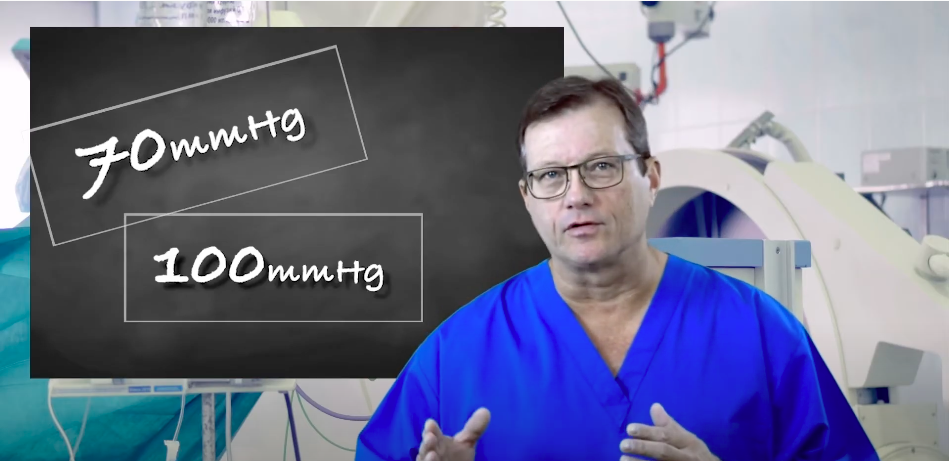Dopamine Trick Must-Haves
ACLS Certification Association videos have been peer-reviewed for medical accuracy by the ACA medical review board.
Article at a Glance
- This trick will help the provider in the field determine the correct dopamine infusion rate for a particular patient.
- The provider must have a dopamine concentration of 1600 mcg/mL with 60-drop IV tubing.
- Using the patient’s weight in pounds, drop the last number, and subtract 2 to get the drip rate for dopamine at 5 mcg/kg/min.
If you’re in the field without an IV pump, there’s a little trick. While not an official guideline, it’s widely known and works. First, you’ll need a dopamine concentration of 1600 mcg/mL, which is 400 mg in 250 cc of fluid. You also need a 60 drop (gtt) tubing, which means there are 60 drops in one CC. The trick is to take the patient’s weight in pounds not kilograms, which is one of the few times we utilize pounds. Take the patient’s weight, drop the last number, and subtract two. That will provide you the drip rate to achieve 5 mcg/kg/min for that patient. Read: 10 Cardiac Drugs to Know for the Pharmacology Test For example, a patient weighs 200 lbs. We drop the last digit, leaving us with 20. Next, we subtract two, giving us 18 gtts/min. That’s the drip rate to achieve 5 mcg/kg/min. Remember, you may use this trick during heart failure. For the dopamine infusion trick, make sure to use the patient’s weight in pounds.What is the Dopamine Infusion Trick for the Field?

Adenosine inhibits the SA node firing and conduction through the AV node. It’s used to treat SVTs. It may also be used as a diagnostic tool in the case of ventricular tachycardias. Remember to administer a liberal amount due to its short half-life.Summary
More Free Resources to Keep You at Your Best
Editorial Note
ACLS Certification Association (ACA) uses only high-quality medical resources and peer-reviewed studies to support the facts within our articles. Explore our editorial process to learn how our content reflects clinical accuracy and the latest best practices in medicine. As an ACA Authorized Training Center, all content is reviewed for medical accuracy by the ACA Medical Review Board.

